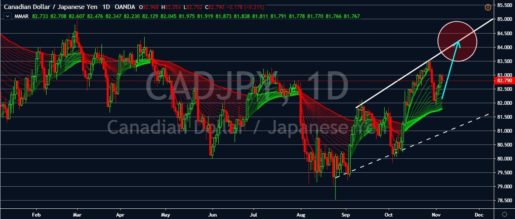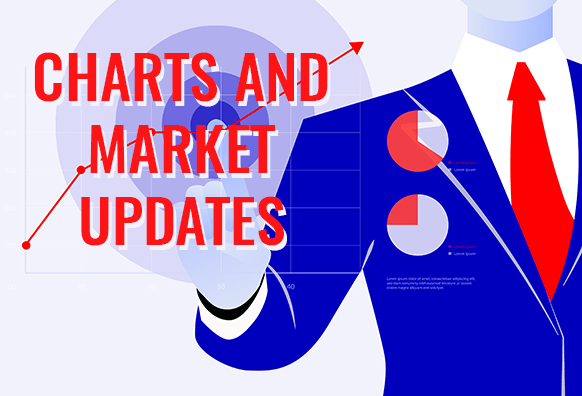Good day traders! Check now the most recent charts and market updates for today’s session. Learn more about analysis and be updated on the current happenings in the market!
USDCNH
The Chinese yuan dragged the US dollar into red territories after it received support from US-China trade war news. In fact, both the US dollar and the Chinese yuan gained strength as investors shift their gears into a more optimistic tone regarding the trade war negotiation. But in the end, the yuan still came out stronger and continues to push the greenback even lower. Chinese yuan traders are taking the opportunity as the Chinese economy slowly transitions into a more consumer-driven approach, ideally making it less volatile to trade. Both economic giants are still tied in their trade war and are currently trying to successfully seal the first phase of their trade deal, which is expected to be inked later this month. Despite the yuan’s strength, the country’s economy has alarmingly continued to decline, in which Beijing reported that its third-quarter GDP grew by 6%, lesser than expected. China’s GDP declined since the trade war started. In this case, if the Chinese yuan continues to hold on to its levels, it will mean trouble for Chinese exports.
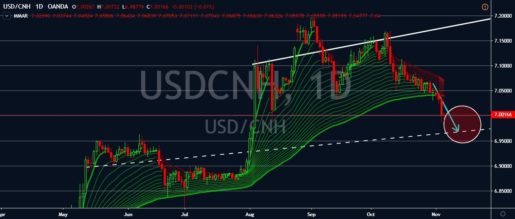
EURNZD
The single currency to kiwi trading pair appears to be in a less wild ride in the past few sessions. This is because of mixed results in reports about the Eurozone’s economic activity. The bloc’s economy significantly grew way more than initial thoughts last month. However, it still remains close to stagnation or almost lethargic. The European Central Bank, now led by former IMF boss Christine Lagarde, resumes its €2.6 trillion bond buying program to give more support and stimulate inflation and growth. Traders expect the euro to gradually inch its way up against the kiwi as the rising unemployment rate of the country weighs on the New Zealand dollar. Given that the employment data is one of the key factors that the Reserve Bank of New Zealand considers for its monetary policy decisions, traders are now expecting the bank to ease rates. New Zealand’s third-quarter unemployment rate rose 4.2% from 3.9%, going beyond 4.1% expectations.
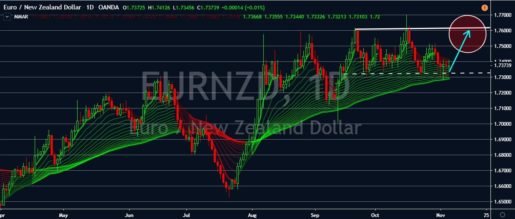
GBPAUD
Pound traders are getting increasingly more worried despite the increasing odds for the Tory leader to snatch the December snap election in the United Kingdom. The uncertainties around the UK’s political environment leans in favor to the British Prime Minister Boris Johnson as the Brexit leader negotiates an agreement with the Tories. With all the chaos in UK politics – the Parliament dissolved, Brexit delay, and the snap election – traders are expecting that the Bank of England will leave its interest rates unchanged on Thursday. The BOE, led by the outgoing governor Mark Carney, is highly anticipated to hold on to its 0.75% interest rates. The pound isn’t the only one getting bad omens, even though the RBA decided to hold its interest rates on its Tuesday meeting, foregoing economic stimulus, and Aussie traders are wondering whether how long the bank can hold. The Australian economy looks in need of a boost as reports such as the country’s retail volumes turn out lower than expectations.
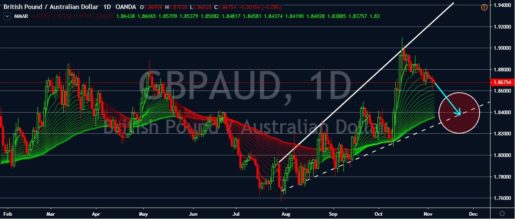
CADJPY
The positive news from the trade war sent global stocks soaring in recent trading sessions, thus pushing more pressure on the Japanese yen. Just recently, the governor of the Bank of Japan, Haruhiko Kuroda, said that the monetary policy easing by the central bank will not be limited to slashing its interest rates. The Japanese official then added that the economy would remain stabilized despite the recent consumption tax hike. The board members of the Bank of Japan debated the feasibility of adding up more stimulus it their past monetary policy meeting in September. This is showed on Wednesday’s release of the meeting’s minutes. Experts say that the trade war between the US and China is a ‘lose-lose’ situation for the safe-haven asset and the Japanese economy. Meanwhile, Canada’s trade deficit narrowed down in September, according to recent reports, the country’s trade deficit declined to CA$978 million. The huge drop from August’s trade deficit of CA$1.24 billion as the country’s exports and imports decline.
